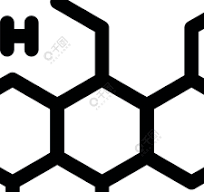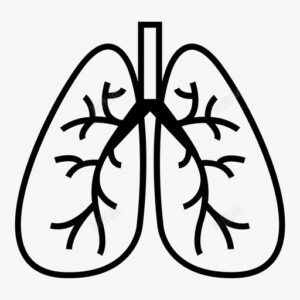Doxycycline Hyclate Tablets.
Effects and efficacy:
Doxycycline has a broad antibacterial spectrum and is used for infections caused by bacteria, rickettsia, mycoplasma, and chlamydia. It can prevent malignant malaria and leptospira infections, and can also be used as an adjuvant treatment for moderate to severe acne. It is used to treat rickettsial diseases (such as epidemic typhus, endemic typhus, Rocky Mountain spotted fever, scrub typhus, Q fever), mycoplasma infections, chlamydia infections (including psittacosis, venereal diseases, lymphogranuloma, nonspecific urethritis, salpingitis, cervicitis, trachoma), relapsing fever, brucellosis (combined with aminoglycoside antibiotics), cholera, tularemia, plague (combined with aminoglycoside antibiotics), and chancroid. Used to treat tetanus, gas gangrene, yaws, syphilis, gonorrhea, leptospirosis, actinomycetes infection, listeria infection, Neisseria meningitidis infection, Clostridium infection, Bacillus anthracis infection, and Fusobacterium infection in patients who are allergic to penicillin antibiotics. Used for upper respiratory tract infections, tonsillitis, biliary tract infections, lymphadenitis, cellulitis, and chronic bronchitis in the elderly caused by sensitive Gram-positive cocci and Gram-negative bacilli. Used as an adjuvant treatment for moderate to severe acne. Used to prevent malignant malaria and leptospirosis infection. Used to treat inguinal granuloma. Used to treat rhabdomyosarcoma. Used to treat infections caused by Escherichia coli, Enterobacter aerogenes, Shigella, Mima, Herceliac, Haemophilus influenzae (respiratory tract infections), and Klebsiella (respiratory tract infections and urinary tract infections). Used as an adjuvant treatment for acute intestinal amebiasis. For use as an adjuvant treatment after scaling and root planing in adult periodontitis patients to increase attachment levels and reduce periodontal pocket depth.
Dosage and Administration:
Regular adult oral dose: On the first day, 100 mg once, once every 12 hours; thereafter 100-200 mg once a day (or 50-100 mg once, once every 12 hours). Please follow your doctor’s advice for details. Intravenous infusion: 200 mg on the first day, divided into 1-2 infusions; thereafter, 100-200 mg a day, 200 mg divided into 1-2 infusions according to the degree of infection. Please follow your doctor’s advice for details. Oral administration: 100 mg once, once every 12 hours, for a course of 7 days. Please follow your doctor’s advice for details. Oral administration: 100 mg once, twice a day, for a course of at least 7 days. Please follow your doctor’s advice for details. Oral administration: 150 mg once, once every 12 hours, for a course of at least 10 days. Please follow your doctor’s advice for details. For primary and secondary syphilis, the recommended intravenous drip is 300 mg per day for 10 days. Please follow your doctor’s advice for details. Oral administration: 100 mg per week. Please follow your doctor’s advice for details. Oral administration: 100 mg once, twice a week. Please follow your doctor’s advice for details. Intravenous drip: 100 mg once, twice a day. Intravenous administration can only be used when there is no indication for oral administration, and oral medication should be used as soon as possible. The course of treatment is at least 2 months. Please follow your doctor’s advice for details. Oral administration: Use 20 mg tablets of this drug: 20 mg once, once every 12 hours, and the course of treatment is 9 months. Please follow your doctor’s advice for details. Oral administration of children’s regular dose: (1) For patients weighing less than or equal to 45 kg, on the first day, take 2.2 mg/kg once every 12 hours, and then take 2.2-4.4 mg/kg once a day (or 2.2 mg/kg once, once every 12 hours); (2) For patients weighing more than 45 kg, the dosage is the same as that of adults. Please follow your doctor’s advice for details. Intravenous drip: (1) For patients weighing less than or equal to 45 kg, 4 mg/kg on the first day, divided into 1-2 drips, and then 2-4 mg/kg per day according to the degree of infection; (2) For patients weighing more than 45 kg, the dosage is the same as that of adults. Please follow your doctor’s advice for details. Intravenous drip for children over 8 years old and weighing less than or equal to 45 kg: 2.2 mg/kg once, twice a day. Please follow your doctor’s advice for details. Intravenous administration can only be used when there is no indication for oral administration, and oral medication should be used as soon as possible, with a course of at least 2 months. Please follow your doctor’s advice for details. Note: Patients with impaired renal function generally do not need to adjust the dose; long-term medication requires follow-up blood routine examinations and liver function tests.
Adverse reactions:
Digestive system: Oral administration of this product can cause gastrointestinal reactions such as nausea, vomiting, abdominal pain, and diarrhea. There have been occasional reports of esophagitis and esophageal ulcers, which mostly occur in patients who are bedridden immediately after taking the drug. Hepatotoxicity: It is prone to occur in patients with fatty liver degeneration and pregnant women, and can also occur in patients without the above conditions. Pancreatitis may occur occasionally. Pancreatitis caused by this product may also occur simultaneously with hepatotoxicity, and the patient does not have primary liver disease. Allergic reactions: Mostly maculopapular rash and erythema, a few patients may have urticaria, angioneurotic edema, allergic purpura, pericarditis, and aggravation of skin lesions of systemic lupus erythematosus, and exfoliative dermatitis is not common; anaphylactic shock and asthma may occur occasionally. Some patients may have photosensitivity after sun exposure after taking the drug. Therefore, it is recommended that patients should not be directly exposed to sunlight or ultraviolet rays while taking this product. Please pay attention to taking sun protection measures. If there is erythema on the skin, the drug should be stopped immediately. Blood system: It may occasionally cause hemolytic anemia, thrombocytopenia, neutropenia and eosinophilia. Central nervous system: It may occasionally cause benign intracranial hypertension, which may manifest as headache, vomiting, optic disc edema, etc., which can be relieved after stopping the drug. Dual infection: Long-term use of this product can cause digestive tract, respiratory tract and urinary tract infections caused by drug-resistant Staphylococcus aureus, Gram-negative bacteria and fungi, and in severe cases can cause sepsis. In addition, the use of tetracyclines can reduce the normal flora in the human body, and cause vitamin deficiency, fungal growth, dry mouth, pharyngitis, angular cheilitis and glossitis.
Drug contraindications:
Allergic to this product is prohibited. It is prohibited during pregnancy and lactation. It should be used with caution in children.
Share:
Products
Our offers
Health Classification
Let us work together to protect precious health































